India Indian music music vocalists
by Warren
2 comments
Meta
SiteMeter
Brighter Planet
78 rpm Records of Indian Music: Mr. Chimanlal
Here is a male vocalist singing a pair of raga-based sort-of-khyal compositions. I’m not sure what relationship these songs have with the orthodox classical tradition. For that matter, the text as given on the disc label for the Bageshri doesn’t seem to match the mukhda he’s performing. (headscratch).
Mr. Chimanlal has a pleasant voice with a good upper register, and while he mostly eschews anything in the way of elaborate improvisation, he’s clearly got the technique. All of the 78s released on The Twin Records were part of the collection I purchased in Udaipur in 2000.
Anyway, here’s a song in Bageshri:
And a delightful item in Raga Bhimpalasi; in this one the written text matches the mukhda.
India Indian music music vocalists: 78 rpm discs Quawwali Urdu
by Warren
2 comments
Meta
SiteMeter
Brighter Planet
78 rpm Records of Indian Music: Mahomad Yacub and Fidai Premragi
Here are some early Quawwali performances, again part of the same collection of 78 rpm discs purchased in Udaipur in 2000.
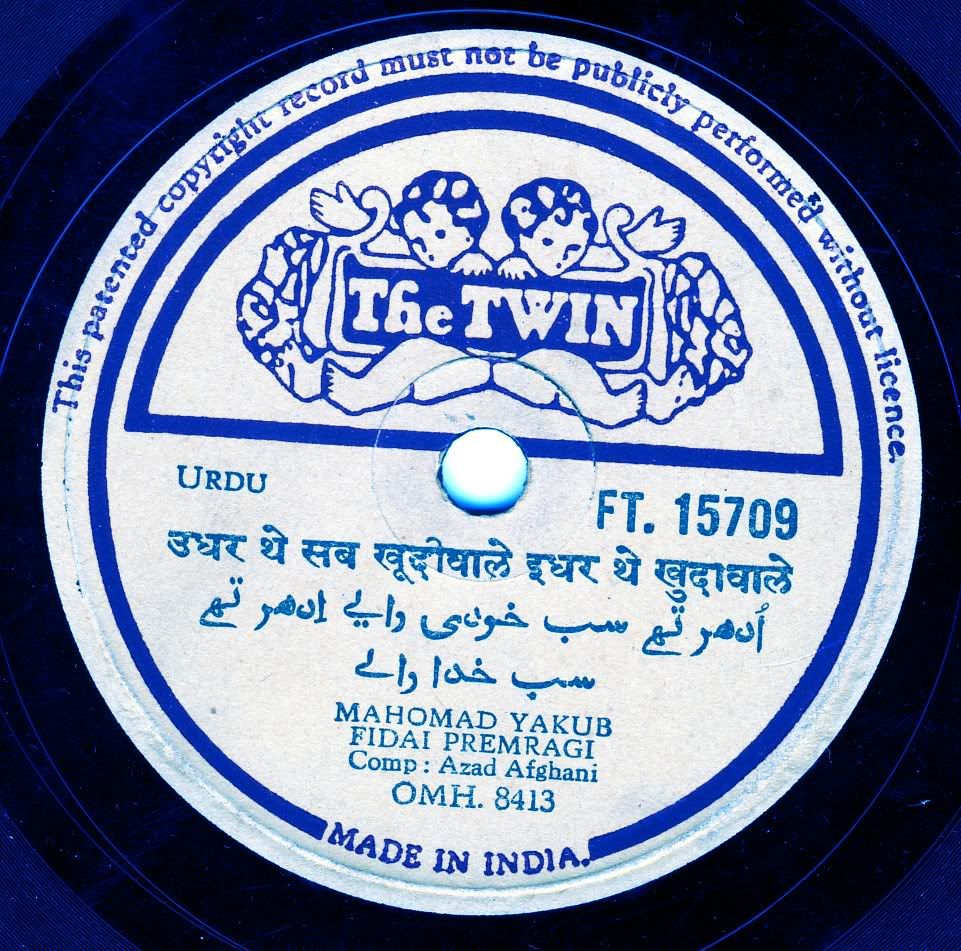
Searching for “Mahomad Yacub and Fidai Premragi” yields only these videos; their names have faded into oblivion, at least until today.
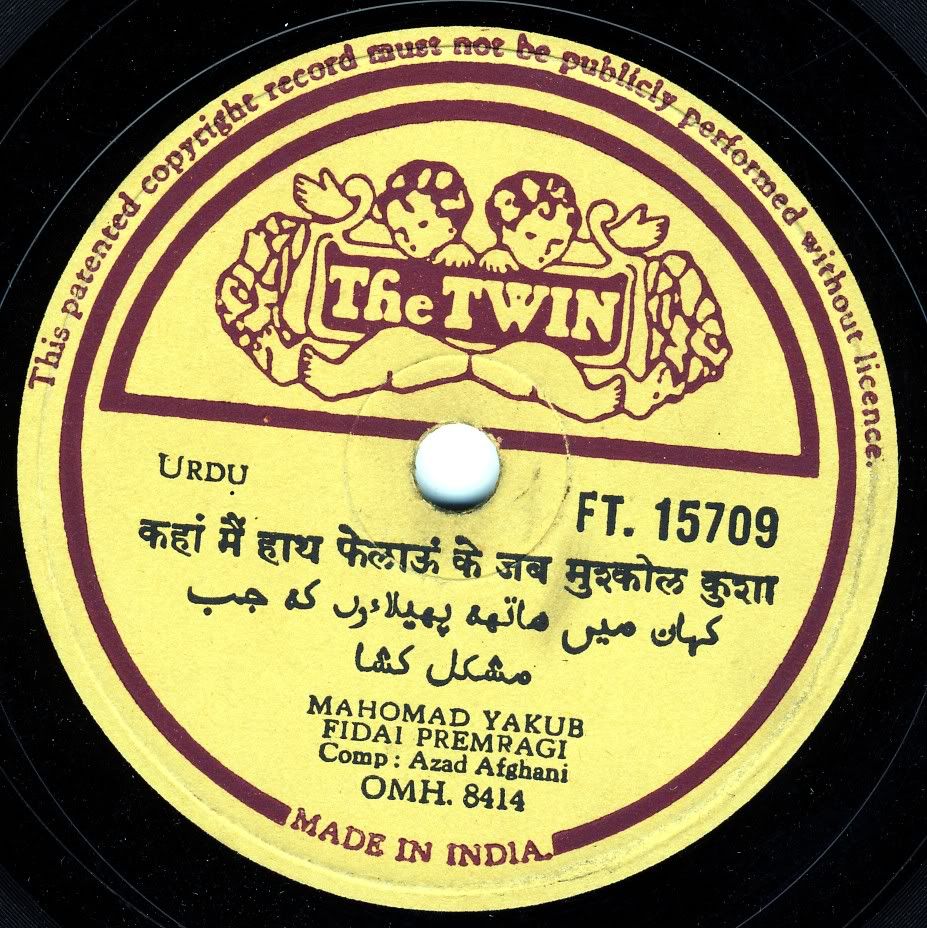
Enjoy listening to two forgotten voices from an all-but-vanished world.
The handclaps on “Udhar the sab khudiwale” remind me of Philly Joe Jones’ famous on-the-fourth-beat rimshots, an association that in turn reminds me of just how narrow a demographic I actually occupy.
India Indian music music vocalists: 78 rpm discs bhajan Marwari geet
by Warren
1 comment
Meta
SiteMeter
Brighter Planet
78 rpm Records of Indian Music: M.L. Choudhury and Sunita Devi
Gradually moving through my complete collection of 78 rpm discs on Marwari Records, we come to the duet team of M.L. Choudhury and Sunita Devi, who perform a long piece in two parts. This is identified as a “Shiv Lila Bhajan.” I would welcome clarification of the nature of this music in the comments — any experts out there?
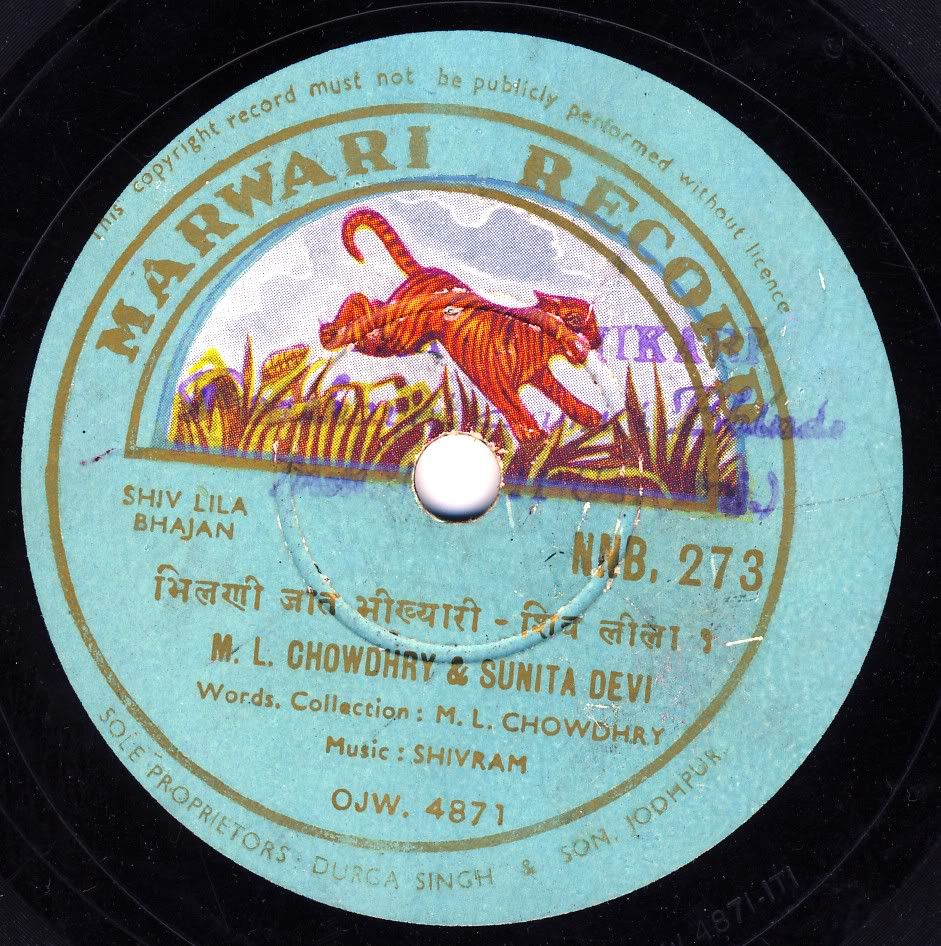
As always, I love, love, love that tiger!
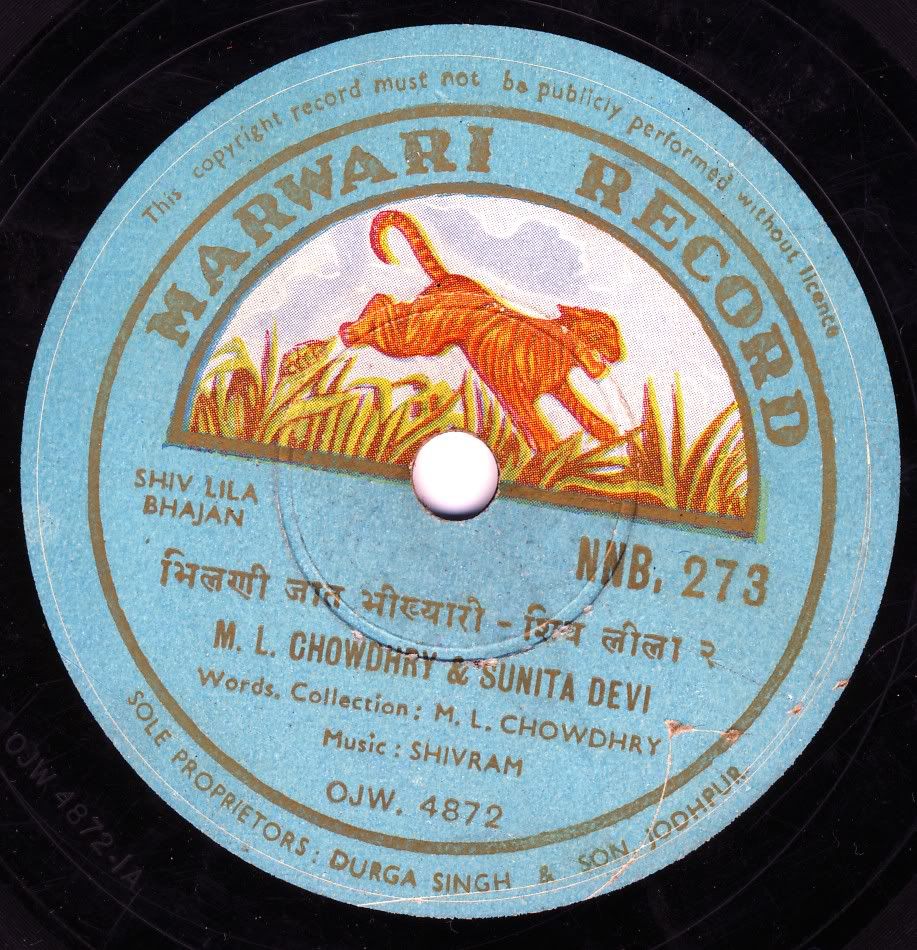
India Indian music music vocalists: 78 rpm discs Marwari geet
by Warren
3 comments
Meta
SiteMeter
Brighter Planet
78 rpm Records of Indian Music: Parvati and Party of Udaipur
More Marwari geets in the vivid low fidelity that appears characteristic of the output of “Marwari Records.” Parvati and Party get a nice groove going, and it is enjoyable to listen through the distortion to get a picture of what this music originally sounded like.
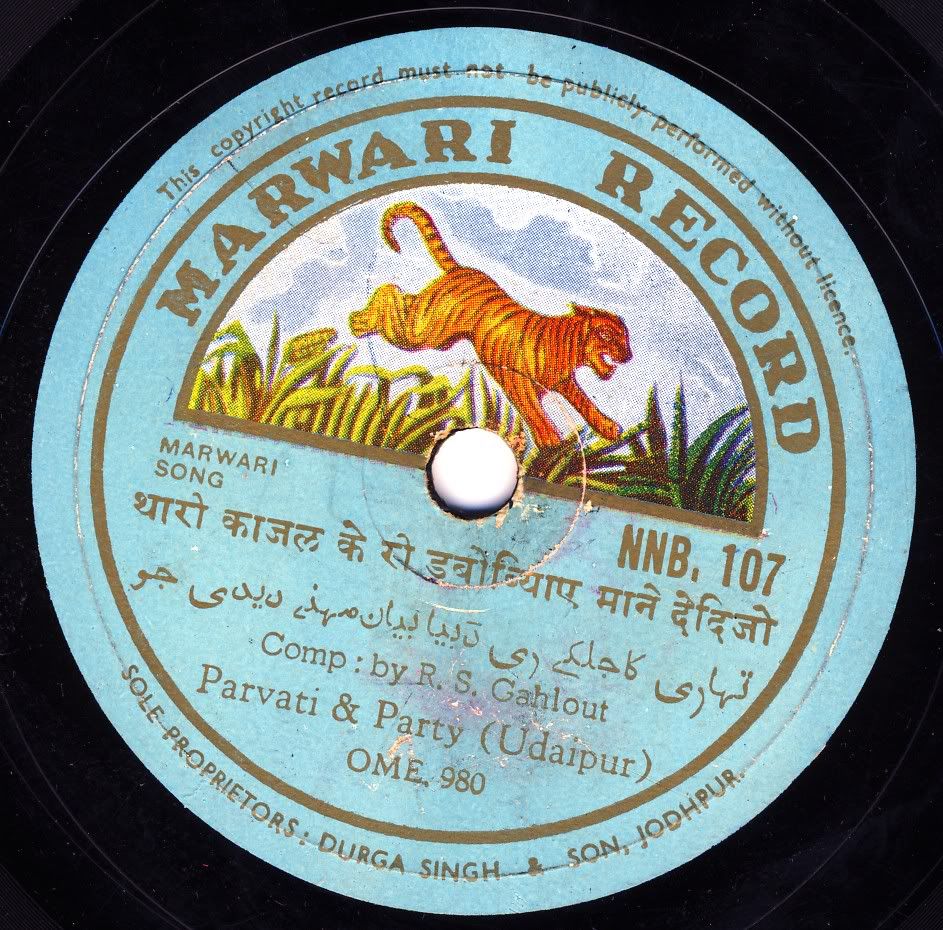
Lo-fi they may have been, but you’ve got to admit that Marwari Records had a damn cool label. I love the tiger, don’t you?
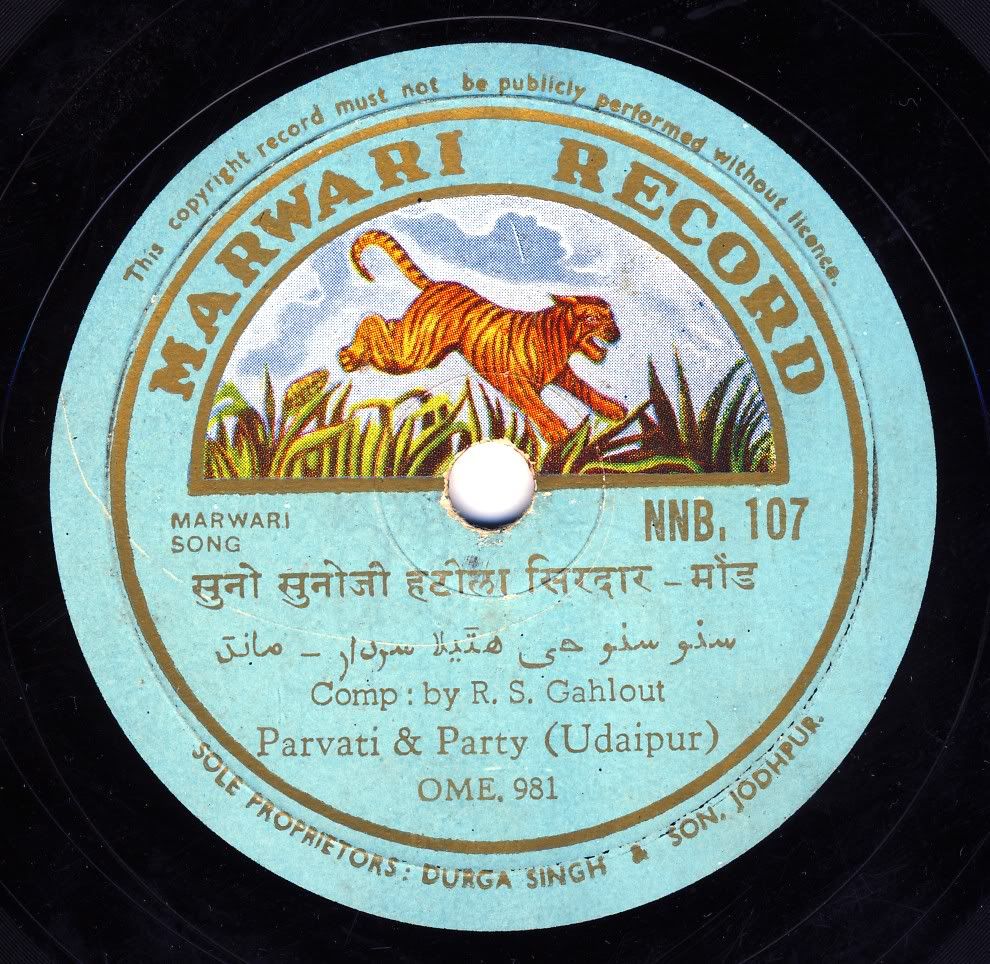
Listening to these 78 rpm discs is a wonderful experience. It’s like falling in love.
India Indian music music vocalists: 78 rpm discs Indian folk music Marwari geet
by Warren
1 comment
Meta
SiteMeter
Brighter Planet
78 rpm Records of Indian Music: Dhirasen of Jodhpur
My wife and I were in Udaipur in 2000, and we discovered a tiny little out-of-the-way junk shop that just happened to have a big stack of old 78 rpm discs for sale. I picked up as much as I could carry. None of the names were ones I recognized; these were all regional songs in Rajasthani, Marwari and Urdu.
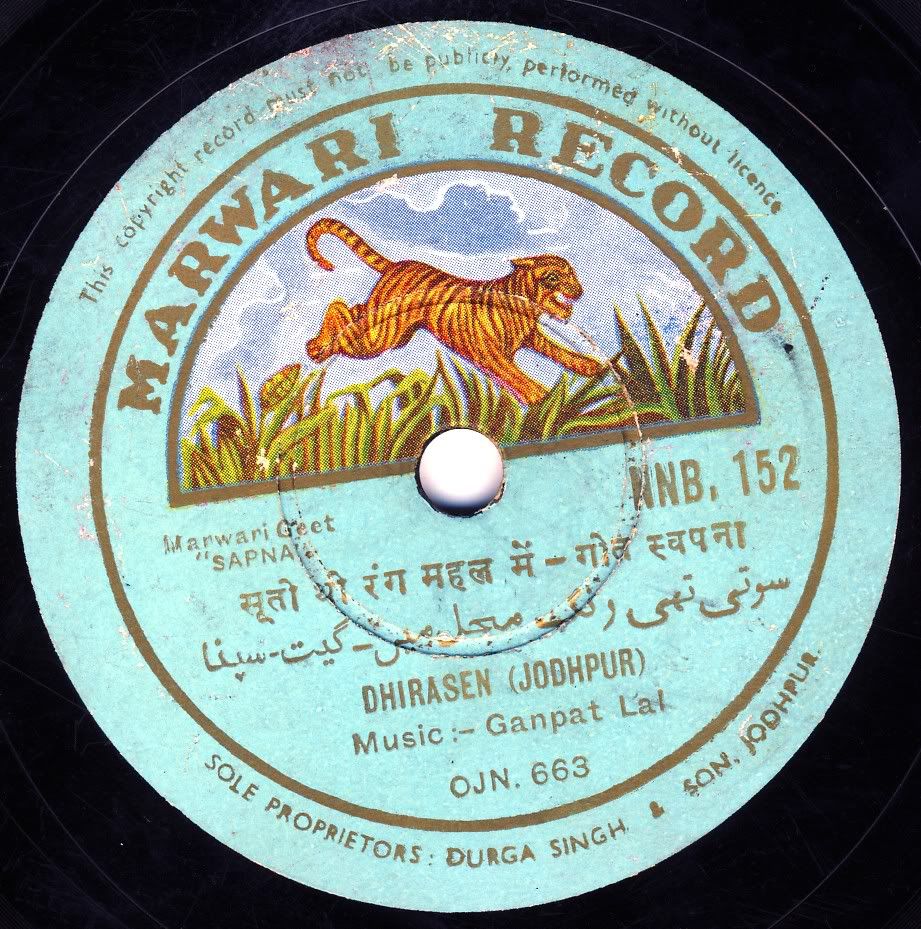
Here are two Marwari songs by a lady about whom I know nothing, Dhirasen of Jodhpur. The distorted sound is on the disc; Marwari Records was obviously not a top-of-the-line operation.
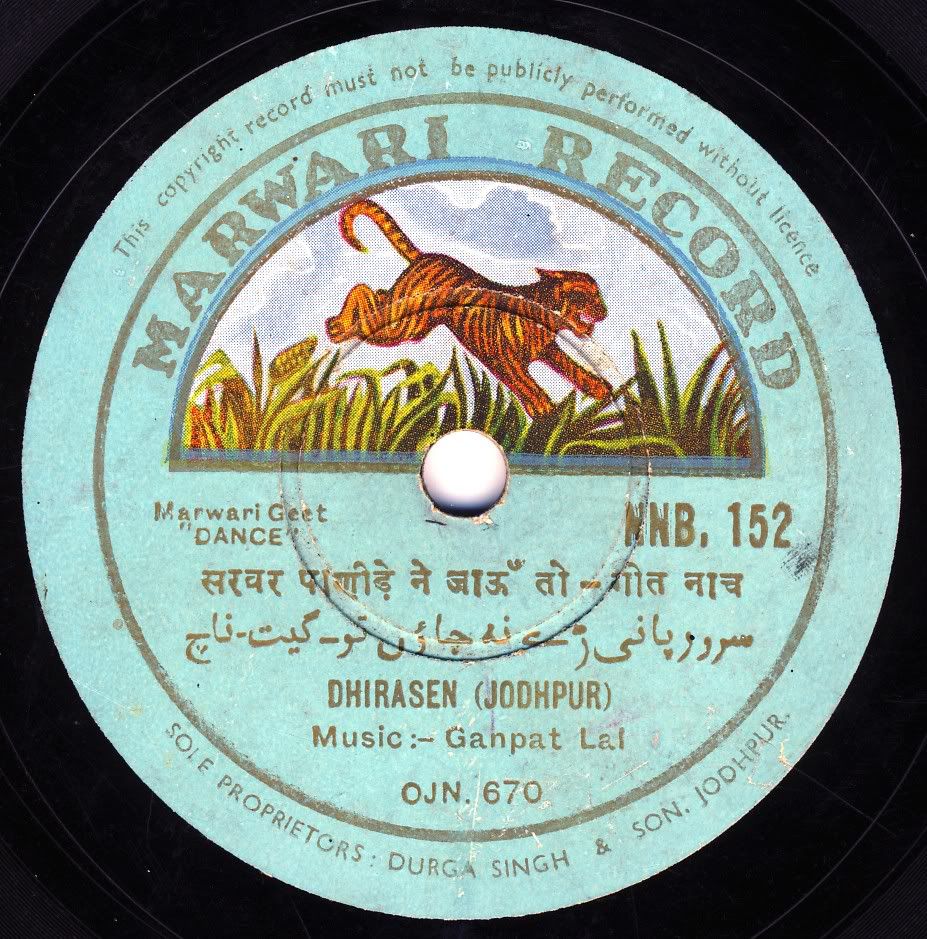
I find these recordings mysteriously evocative.
India Indian music music vocalists: near genius thumri
by Warren
4 comments
Meta
SiteMeter
Brighter Planet
78 rpm Records of Indian Music: Bai Sundra Bai
Bai Sundra Bai was one of the most heavily recorded artists from the thumri culture of the early 20th century along with Gauhar Jan, Janki Bai and others. Originally from Pune, her repertoire included Marathi bhavgeets along with thumris, ghazals and occasional khyal performances. Her recording career extended into the late 1940s, with some work for films.
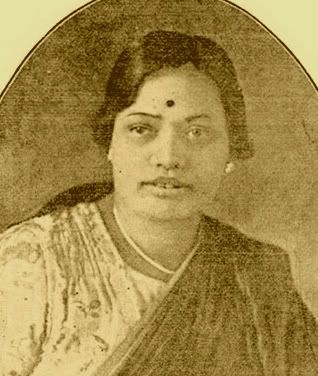
I enjoy these two thumri performances, both on fairly standard Krishna texts. Both show her flexible voice and excellent taan technique; the Tilak Kamod in particular is very impressive.
Tilak Kamod: “Avata hai giridhari”
Jhinjhoti: “Kanha charavata gaayi”
India Indian music music vocalists: geet tappa thumri
by Warren
3 comments
Meta
SiteMeter
Brighter Planet
78 rpm Records of Indian Music: Miss Indubala
For a self-described “amateur,” Miss Indubala recorded very prolifically, as this discography shows. Of course, the word “amateur” was code for “Do Not Mistake Me For A Tawaif.”
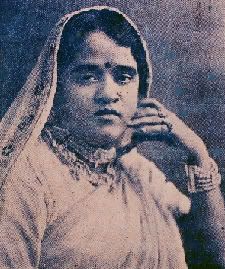
Miss Indubala: 1899-1984.
This is an unusual piece. The opening mukhda and much of the following singing uses frequent tappa-ang taankari, but the text is Hindi, and describes Lord Shiva — playing the games of Holi!
I have never heard any other Hori composition which includes Shiva in the festivities.
The other side of the record, unfortunately, has so many skips and pops in it that trying to piece together the performance is beyond me at the moment.
Indubala’s life story would make a good movie:
Indubala’s mother was Rajabala, who along with sister Matibala and brother Tinkary worked in Motilal Bose’s The Great Bengal Circus, also known as Bose’s Circus or Professor Bose’s Circus. Harimati was the eldest sister of Rajabala and had a different life. Rajabala performed mainly as a trapeze artiste and got married to Motilal Bose at a temple in Ujjain, India. At the time he was then in his forties while Rajabala was still a teenager. The marriage was never accepted as legal by Motilal’s family. Motilal Bose’s first wife was Mrs. Annadamohini Devi. Indubala was born in Novenber, 1899 at Amritsar, where the circus party had gone for performance. Indu was born premature and Dr. Bidhumukhi Basu was taken to Amritsar from Calcutta to attend to Rajabala. Such was the affection and concern of the husband for his young wife. Motilal’s interest in Rajabala dwindled later, supposedly because Rajabala showed no interest in going back to the circus after Indu’s birth and soon she was left to fend for herself. She came to Calcutta with her daughter and was given shelter by a Jiban Krishna Ghosh, who remained loyal to her till his death and also played a major role in establishing Indubala in her life as a performer. Once in Calcutta, Rajabala trained herself as a singer and Indubala’s first training in music was from her mother. The initial plan was to train Indu as a nurse and she was admitted as a trainee in a hospital in the Pataldanga locality of Calcutta. Indu did not take fancy in the job and ran away from the hospital, much to the disappointment of her mother, who never wanted her only daughter to be forced into a life of indignity. After this incident Indubala’s musical training started. Although her father ignored wife Rajabala completely, he remained fond of his daughter and kept in touch with her and often invited her to his ancestral home where he lived during his brief visits to Calcutta and sent her a monthly pocket money of Rupees twenty till his death. Indubala’s first performance was at a gathering of distinguished guests where her mother was the chief entertainer. Each one of the guests appreciated Indu’s singing and thus began her formal training from Gouri Shankar Mishraji. Indu was only about twelve then. This also marked the entry of Indubala into the red light world. Amongst her trainers were Kali Prasad Mishra, Elaahi Bux and Miss Gauhar Jaan. Apart from music, Miss Gauhar Jaan, credited as Prima Donna of India, Indu also learned etiquette from the elder artiste and developed a close friendship with her. This association provided Indu with valuable musical knowledge and experience.
India Indian music music vocalists: Marathi bhavgeet near genius
by Warren
leave a comment
Meta
SiteMeter
Brighter Planet
78 rpm Records of Indian Music: G.N. Joshi
G.N. Joshi was both a singer and the main A&R man for HMV India; “Down Melody Lane,” his reminiscences of a life in music, is an excellent read.
Here are two of the Marathi geets he recorded at the beginning of his career.
His voice production is easy and clear, and he handles the melismatic passages with aplomb.
The next item is based on the popular afternoon raga Patdeep, and includes some lovely improvisation; it is a khyal performance in all but name. Joshi’s melodic imagination is captivating; the piece ends with some excellent taankari.
India Indian music music: clarinet genius
by Warren
leave a comment
Meta
SiteMeter
Brighter Planet
78 rpm Records of Indian Music: Rajan Sarkar And Keramatullah Khan
The clarinetist Rajan Sarkar, accompanied by the great tabliya Ustad Keramatullah Khan. I greatly enjoy these performances; it’s a shame that Sarkar is not better known. He is mentioned in Greg Booth’s 1997 article “Socio-Musical Mobility Among South Asian Clarinet Players,” and his name appears in connection with the early Bombay cinema music scene.
Dhun
This version of Malkauns is a rough adaptation of the vocal bandish Koyaliya bole ambuva, one of the most commonly taught compositions in this raga. On both renditions, Keramatullah Khan’s accompaniment is terrific; wonderful fat sound and righteous theka playing.
India Indian music music: musical oddity near genius syncretism
by Warren
7 comments
Meta
SiteMeter
Brighter Planet
78 rpm Records of Indian Music: The Dacca Orchestral Party
This enchanting ensemble is a mix of Indian and Western instruments with occasional vocals. Googling the name “Dacca Orchestral Party” yields nothing. I wonder: would you have heard this group playing in the lobby of a Grand Hotel in the 1920s?
Wonderful. Surely one of the earliest pieces of East-West Fusion in existence.
Raga Kafi:
The little vocal interlude is priceless.
=========================================
Raga Bhairavi:
The string/percussion section at 2:38 is timbrally fascinating. I could never have imagined such a combination; it almost recalls some of Harry Partch’s orchestrations.
